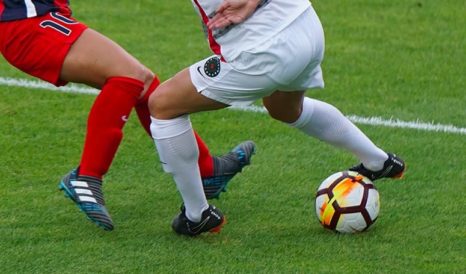Ankle Instability/Lateral Ligament Instability
 Every day, one in 10,000 people worldwide sustain a lateral ligament injury of the ankle – making this by far the commonest ligament injury seen by surgeons, sports medicine physicians and those in the fitness industry. These injuries (also known as ankle sprains) occur when the foot is twisted suddenly and the ligaments are damaged, presenting symptoms of pain, bruising, swelling and instability.
Every day, one in 10,000 people worldwide sustain a lateral ligament injury of the ankle – making this by far the commonest ligament injury seen by surgeons, sports medicine physicians and those in the fitness industry. These injuries (also known as ankle sprains) occur when the foot is twisted suddenly and the ligaments are damaged, presenting symptoms of pain, bruising, swelling and instability.
While lateral ligament injuries can easily be treated non operatively, an injury that is not treated and rehabilitated correctly can result in repeated lateral ligament injuries and chronic instability, where even a minor trauma to the ankle can cause a significant longer-term injury.
While many people who suffer sprained ankles assume that they can strap it up, take some analgesics and start walking on it as soon as the pain is bearable, this will not enable the ligaments to heal properly.
Ideally, any acute injuries to the ankle should be clinically assessed as soon as possible with an MRI scan organised. After this, the ankle is immobilised for three to four weeks, to allow healing of the lateral ligaments. Patients then undergo an exercise-based rehab programme, achieving full recovery in 80 to 90 percent of cases.
With more chronic injuries, exercise-based therapies are tried initially to improve balance and proprioception, enabling patients to compensate for stretched/attenuated elements of the lateral ligament complex.
The diagnosis of lateral ligament injury is straightforward. There is normally a history of an injury and instability, the lateral ligaments are swollen and tender, and moving the ankle demonstrates a range of excess movements: an exaggerated anterior drawer test (sliding the ankle joint forward), and/or an excess internal rotation of the Mortise joint (the hinge between the shin bone and the ankle bone), both of which demonstrate damage to the lateral ligament complex. Any excess inversion (twisting inwards) demonstrates damage to the calcaneofibular ligaments.
Most patients would ideally have an MRI scan performed, as between five and ten percent of people with a Grade III injury to the lateral ligaments also have an associated injury, such as an osteochondral defect of the talar dome (damage to the ankle bone), or a peroneal tendon injury.
For the small percentage of patients who don’t respond to non-operative treatment, the best solution is a modified anatomic Brostrum repair. This is the reconstruction of the stretched-out lateral ligament complex – usually combined with an arthroscopy to confirm and treat any other problems in the joint at the same time.
Different surgeons have different post-operative rehab programmes. My own preference is an overnight stay in hospital in a back slab (rigid support for the rear of the ankle), followed by three weeks’ Aircast boot immobilisation – fully weight-bearing. After the boot is
removed and stability is confirmed, the patients are given an exercise-based rehab programme – a technique that typically has 95%-plus good or excellent results.
An exciting new development in the arena of lateral ligament instability has been the advent of the Arthrex internal brace. This fibre tape acts like a seatbelt within the joint, and kicks in just as the patient is about to re-injure the lateral ligament. It’s about the size of a boot lace and sits over the top of the anatomic Brostrum repair and is anchored into the talar neck and distal fibula.
Attaching the brace adds only another 10 minutes or so of operating time, but gives an extra level of re-assurance and confidence in the repair process, and does not delay rehabilitation. I strongly support the use of this device, which I think is a big leap forward in ankle stabilisation surgery.
Interestingly, the internal brace concept is now being introduced in knee surgery to reconstruct medial collateral ligament injuries and also do augment ACL reconstruction.
